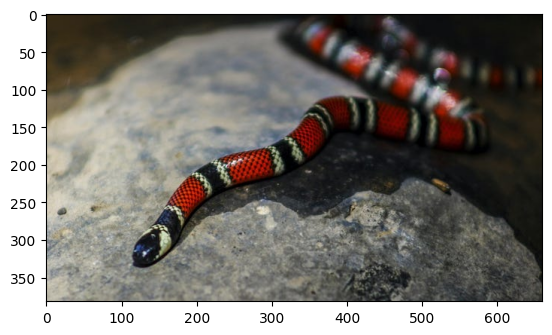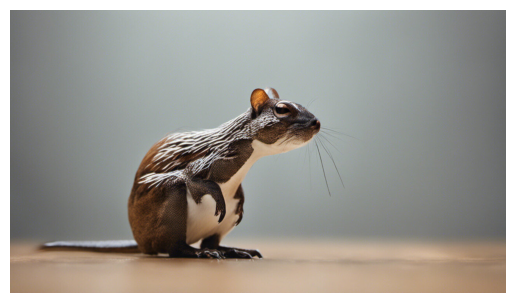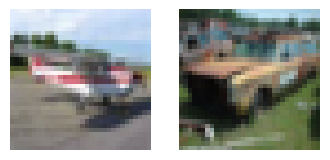LAB 4.2 - Transfer learning#
!wget -nc --no-cache -O init.py -q https://raw.githubusercontent.com/rramosp/2021.deeplearning/main/content/init.py
import init; init.init(force_download=False);
replicating local resources
from local.lib.rlxmoocapi import submit, session
session.LoginSequence(endpoint=init.endpoint, course_id=init.course_id, lab_id="L04.02", varname="student");
BE PATIENT IN THIS LAB, MODELS ARE LARGE AND MAY TAKE A WHILE TO DOWNLOAD, TRAIN, MAKE INFERENCE, and ALSO FOR GRADERS TO EVALUATE YOUR SUBMISSION.
You may want to set the runtime to GPU if in Google Colab
import tensorflow as tf
#!pip install tensorflow_hub
import tensorflow_hub as hub
import numpy as np
import matplotlib.pyplot as plt
from skimage.io import imread
import h5py
import pandas as pd
%matplotlib inline
TASK 1: tensorflow hub classification model#
Complete the following function so that it uses the Inception V1 model on tensorflow hub to obtain the three top ImageNet labels for a given image, along with their probabilities. Observe that:
the input
imgis annp.arrayof dims[w,h,3]the model returns
logitswhich must be transformed into probabilities with a softmax function: \(p_i = \frac{e^{L_i}}{\sum_j e^{L_j}}\), where \(p_i\) is the probability of class \(i\) and \(L_i\) is thelogitassigned to that classyou must resize the input
imgto dimensions[1,224,224,3]. Useskimage.transform.resizewithanti_aliasing=True.you must ensure the pixel values of
imgare in the[0,1]range. Normalize the image pixel values by substracting the minimum value and dividing by the difference between the maximum and the minimum.the logits returned by the model correspond to the labels in this file as described in the tensorflob hub model page. This list is passed to your function in the
labels_listargument.you must return a dictionary with three elements, containing the class labels as keys and the probabilities as values.
For instance, for the following image you should return this dictionary:
{'king snake': 0.8190326,
'ringneck snake': 0.026169779,
'sea snake': 0.030096276}
snake_img = imread('local/imgs/snake.jpg')
plt.imshow(snake_img)
<matplotlib.image.AxesImage at 0x7f02c94e9490>

with open("local/data/ImageNetLabels.txt", "r") as f:
labels_list = [i.rstrip() for i in f.readlines()]
def get_top3_inceptionv1_labels(img, labels_list):
from skimage.transform import resize
m = ... # load the tensorflow hub model, follow the example in notebook 4.6
rimg = ... # resize and reshape the image to [1,224,224,3]
rimg = ... # normalize the image to a [0,1] range
logits = ... # feed the image into the model to obtain the logits
probs = ... # convert logits to probabilities
r = ... # get the top 3 labels according to the probabilitys into a dict
return r
check your code with the image above
get_top3_inceptionv1_labels(snake_img, labels_list)
check your code with any image available on the internet
url_chimp = 'https://scx2.b-cdn.net/gfx/news/2019/canwereallyk.jpg'
!wget -q -O img.jpg $url_chimp
img = imread('img.jpg')
plt.imshow(img); plt.axis("off")
get_top3_inceptionv1_labels(img, labels_list)
{'Egyptian cat': np.float32(0.08435032),
'tabby': np.float32(0.04284886),
'king penguin': np.float32(0.036139373)}

Registra tu solución en linea
student.submit_task(namespace=globals(), task_id='T1');
TASK 2: tensorflow hub feature extraction model#
complete the following function such that when given a set of images returns the feature vectors extracted for each image with the InceptionV1 tensorflow hub model.
Observe that:
tensorflow hubpublishes a different model service for classification or for feature extractionimgscan be any array of shape[n_images, w, h, n_channels]the output must be of shape
[n_images, 1024]you must return a
numpyarray
!wget -nc -q https://s3.amazonaws.com/rlx/mini_cifar.h5
with h5py.File('mini_cifar.h5','r') as h5f:
x_cifar = h5f["x"][:][:1000]
y_cifar = h5f["y"][:][:1000]
x_cifar.shape, y_cifar.shape
((1000, 32, 32, 3), (1000,))
def feature_vector_inceptionv1(imgs):
# YOUR CODE HERE
features = ... # load the model such as in notebook 4.6
return features
observe we can extract the features of our mini cifar dataset
xf_cifar = feature_vector_inceptionv1(x_cifar)
xf_cifar.shape
(1000, 1024)
check your code, this sum must be close to:
array([186.98825, 436.80975, 237.31288, 353.58902, 492.95978, 307.38007,
234.02158, 260.64508, 186.74268, 265.00177], dtype=float32)
xf_cifar.sum(axis=1)[:10]
array([186.98798, 436.80966, 237.31282, 353.58917, 492.95947, 307.3803 ,
234.0216 , 260.64484, 186.74263, 265.00232], dtype=float32)
observe we can do many things now with the features such as
compute similarity between images in this feature space
use any classical machine learning method
etc.
i,j = np.random.randint(len(xf_cifar), size=2)
imgA, imgB = x_cifar[i], x_cifar[j]
plt.figure(figsize=(4,2))
plt.subplot(121); plt.imshow(imgA); plt.axis("off")
plt.subplot(122); plt.imshow(imgB); plt.axis("off");
print ("similarity in feature space", np.linalg.norm(xf_cifar[i]-xf_cifar[j]))
similarity in feature space 18.875452

from sklearn.model_selection import cross_val_score
from sklearn.svm import SVC
estimator = SVC(gamma=.001)
cross_val_score(estimator, xf_cifar, y_cifar)
array([0.755, 0.73 , 0.775, 0.765, 0.73 ])
Registra tu solución en linea
student.submit_task(namespace=globals(), task_id='T2');
TASK 3: Model for fine tuning#
Complete the following function so that it builds a model with three layers:
one
hub.KerasLayerwith https://tfhub.dev/tensorflow/efficientnet/b7/feature-vector/1 feature vector extraction andtrainableaccording to the function parameter.one
Denselayer withdense_sizeneurons andreluactivationone
Denselayer as output with 3 neurons (one for each class) andsoftmaxactivation
Recommendation: embed the hub.KerasLayer within a Lambda layer
m = tf.keras.Sequential([
tf.keras.layers.Lambda(
hub.KerasLayer("https://tfhub.dev/tensorflow/efficientnet/b7/feature-vector/1",trainable=trainable)
),
...
])
def create_model(trainable=False, dense_size=100):
num_classes = 3
m = tf.keras.Sequential([
... # YOUR CODE HERE
])
return m
with dense_size=100 and input_shape=[None, 32, 32, 3] your model should have a total of 64,354,083 parameters, with only 256,403 trainable params if trainable=False, and 64,043,363 if trainable=True
m = create_model(trainable=True)
m.build(input_shape=[None, 32, 32, 3])
m.summary()
Model: "sequential"
┏━━━━━━━━━━━━━━━━━━━━━━━━━━━━━━━━━┳━━━━━━━━━━━━━━━━━━━━━━━━┳━━━━━━━━━━━━━━━┓ ┃ Layer (type) ┃ Output Shape ┃ Param # ┃ ┡━━━━━━━━━━━━━━━━━━━━━━━━━━━━━━━━━╇━━━━━━━━━━━━━━━━━━━━━━━━╇━━━━━━━━━━━━━━━┩ │ lambda (Lambda) │ (None, 2560) │ 0 │ ├─────────────────────────────────┼────────────────────────┼───────────────┤ │ dense (Dense) │ (None, 100) │ 256,100 │ ├─────────────────────────────────┼────────────────────────┼───────────────┤ │ dense_1 (Dense) │ (None, 3) │ 303 │ └─────────────────────────────────┴────────────────────────┴───────────────┘
Total params: 256,403 (1001.57 KB)
Trainable params: 256,403 (1001.57 KB)
Non-trainable params: 0 (0.00 B)
check you can do inference
m(x_cifar)
<tf.Tensor: shape=(1000, 3), dtype=float32, numpy=
array([[0.00263431, 0.00264993, 0.99471575],
[0.0023157 , 0.00308137, 0.99460286],
[0.00151799, 0.00320563, 0.99527633],
...,
[0.00219825, 0.00333721, 0.9944646 ],
[0.00216343, 0.00286247, 0.99497414],
[0.0019352 , 0.00299914, 0.9950656 ]], dtype=float32)>
you can now train your model. If you set trainable=True you should get >80% accuracy in validation with 10-30 epochs
from sklearn.model_selection import train_test_split
x_train, x_test, y_train, y_test = train_test_split(x_cifar, y_cifar, test_size=.2)
print(x_train.shape, y_train.shape, x_test.shape, y_test.shape)
(800, 32, 32, 3) (800,) (200, 32, 32, 3) (200,)
m.compile(optimizer='adam', loss='sparse_categorical_crossentropy', metrics=['accuracy'])
m.fit(x_train, y_train, epochs=10, batch_size=16, validation_data=(x_test, y_test))
Registra tu solución en linea
student.submit_task(namespace=globals(), task_id='T3');

